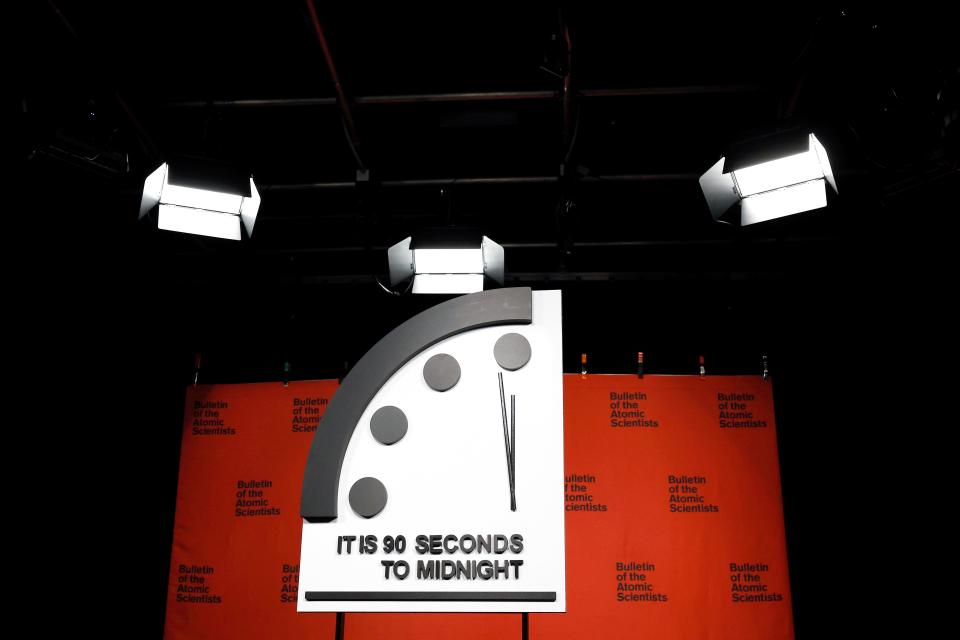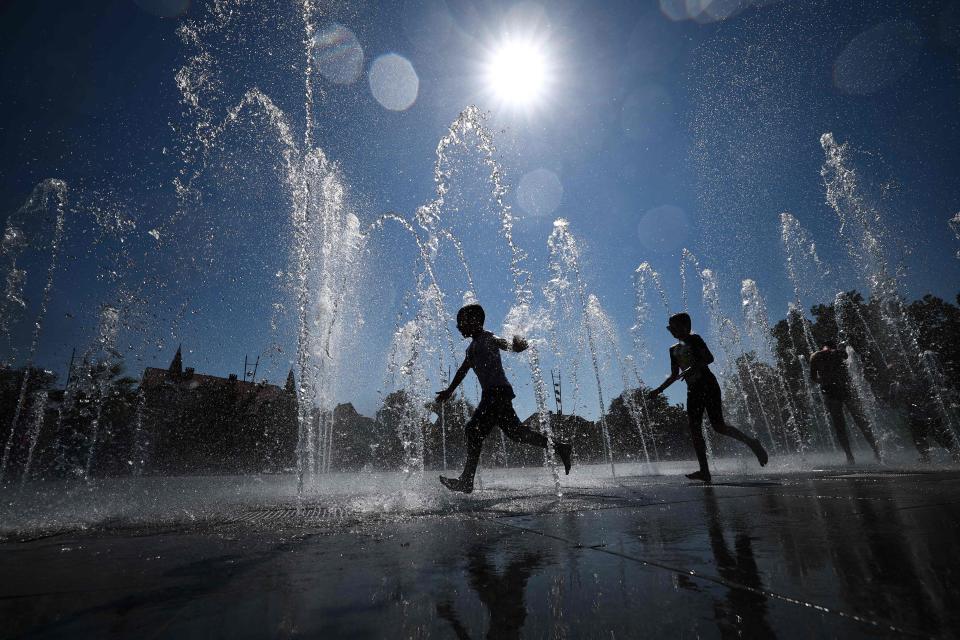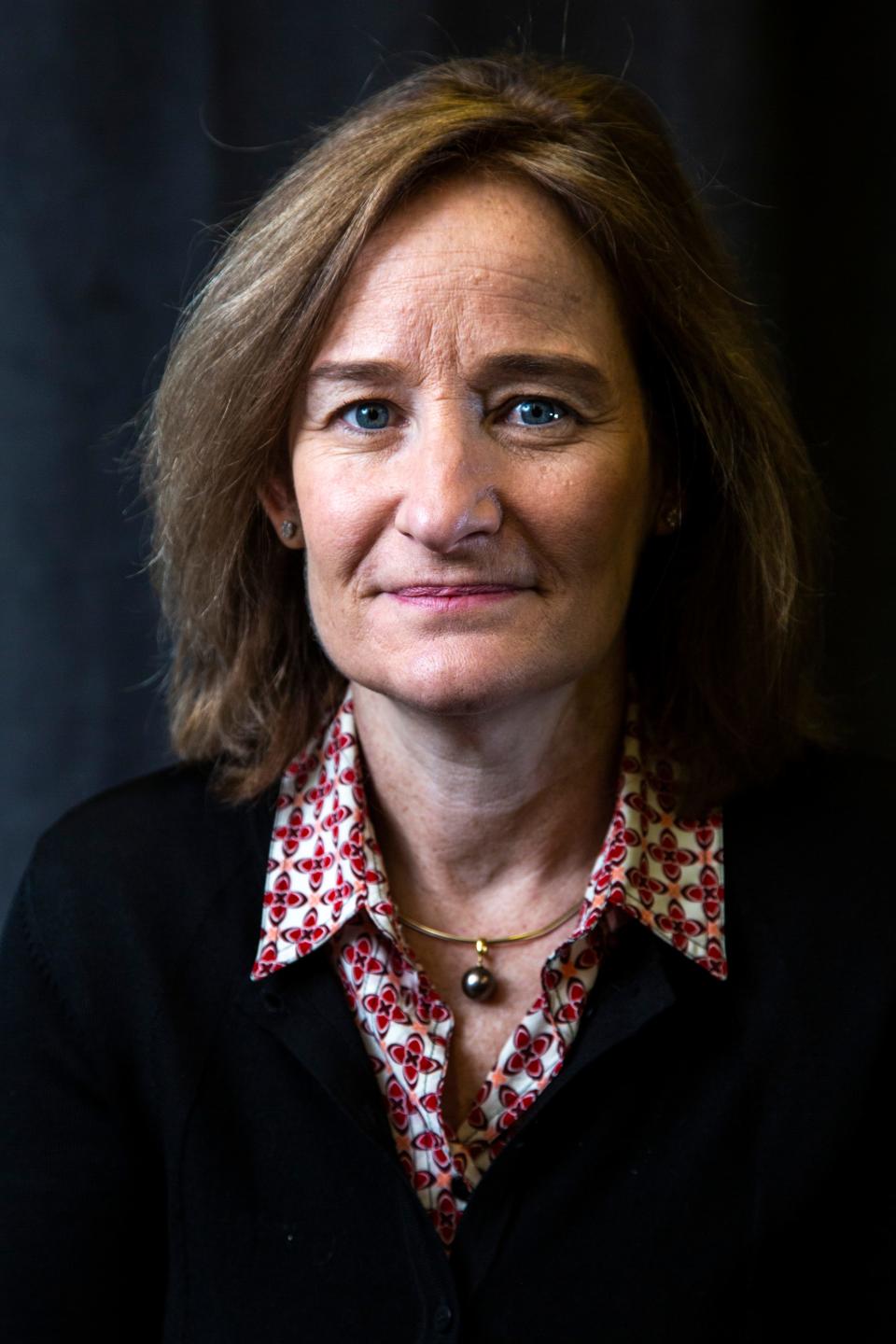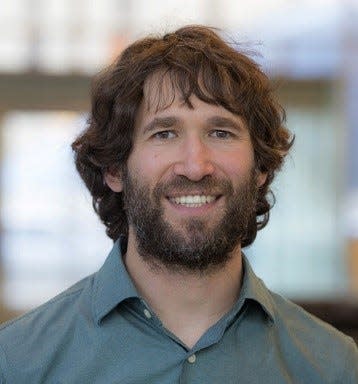Doomsday Clock says we're the closest we've been to apocalypse. We need to move faster.
We live in a world that is persistently unstable.
The war in Ukraine grinds on, a new one starts in Gaza. The climate crisis is felt in increasingly obvious and deadly ways with floods, fires and other extreme weather. The COVID-19 pandemic persists in the background. Glittering new advances in artificial intelligence worry as much as they intrigue. And rather than rising to face these challenges our politics seem to sink to new lows.
Our organization, the Bulletin of the Atomic Scientists, has studied and covered threats to humanity since 1945. It was founded by members of the Manhattan Project, like J. Robert Oppenheimer, who in the wake of the Hiroshima and Nagasaki bombings felt deep responsibility for the consequences of their own work and could foresee new dangers on the horizon.
We use a symbol, the Doomsday Clock, as a metaphor to convey a snapshot of the scientific opinion on the amount of risk humanity faces.
This year we reset the Doomsday Clock to 90 seconds to midnight – holding at the closest we have ever been to apocalypse. Teetering near the edge.

The decision of how to set the clock is made each year by a collection of leading scientists and experts with backgrounds in nuclear physics, public health, technology, climate science and more. Nine Nobel Prize winners advise on the decision. Even with all that brain power, there is no easy formula to answer how close we are to disaster.
90 seconds to midnight: From Doomsday Clock to 'The Last of Us,' our demise is always near
Some years that lack of a clear answer invites debate. But now it feels like our warning fits squarely in the zeitgeist. You do not have to be a Nobel Prize winner to feel that something – many things – are dangerously wrong.
We see this as a moment of acute danger. But as experts who spend our lives on these issues, we also see hope.
Finding hope amid climate, humanitarian crisis
Last year was the hottest year on record. The climate crisis is worsening, and yet more than $1 trillion was invested in fossil fuels last year. But the clean-energy transition has also gathered momentum. More than $1.7 trillion was invested globally in clean energy in 2023, leading to the highest annual increase in renewal generating capacity on record.
The path forward is becoming clear, but we need to move even faster.

Rapid advances in artificial intelligence in 2023 captured world attention. In a mirror of the Bulletin’s creation after the Manhattan Project, in the past year we have seen numerous leaders in AI raise the alarm bells about what they themselves are creating.
They cite worries that our already strained public discourse is not ready to handle more easily generated misinformation or disinformation – warnings that pairing AI with modern bioresearch will lower the barriers to creating new, more harmful biological agents. Concerns about inserting AI technologies into military systems and minimizing human judgment on issues of life and death.
Governments around the world took notice. The European Union proposed a regulatory framework around the technology, President Joe Biden put out an executive order, and dozens of countries are endorsing consensus documents like the Bletchley Declaration and the Declaration on Responsible Military Use of Artificial Intelligence and Autonomy.
Similarly, new World Health Organization and U.S. efforts seek to better regulate pathogen research, which could maintain the ability to create new lifesaving treatments with minimizing risk.
But again, we need to be moving much faster.
Will 2024 bring peace? As we close a year of global public health wins and tragedies, the year ahead holds hope for all
On the brink of nuclear disaster, we need innovation
In the realm of nuclear risk, things are even less rosy. Too many hot spots carry escalation risks.
The war in Ukraine grinds on under looming nuclear threat. The war in Gaza risks escalation that could draw in nuclear and near nuclear powers. Diplomatic efforts with Iran have stalled, tensions remain between India and Pakistan, North Korean nuclear capacity grows. And many nuclear states are investing heavily in their stockpiles, raising fears of a new arms race.
Opinion alerts: Get columns from your favorite columnists + expert analysis on top issues, delivered straight to your device through the USA TODAY app. Don't have the app? Download it for free from your app store.
This instability is raising questions about the fundamental assumptions of our nuclear order. There are some glimmers of hope. We see people worldwide focusing on these issues, and even pushing through a landmark Treaty on the Prohibition of Nuclear Weapons. Recent talks on nuclear issues between the United States and China offer a glimmer of hope for great power risk reduction. Such diplomatic efforts will need to be expanded and accompanied by new creative solutions to return to an era of reduced nuclear risk.
There is progress, but not enough. We keep the Doomsday Clock at the closest it has ever been to midnight because the solutions have not yet reached parity with the problems.

We need innovation by experts to identify new solutions. We need bold political leadership to implement solutions. And ultimately all of us need to be the catalysts. Scientific, economic and political leaders need the informed support – and at times, constructive criticism – of the people.
As much as the public can benefit from an open dialogue about the reality of human extinction, let’s not lose sight of the real mission. By identifying the problems and realizing our shared interest in fixing them, the world can align to create solutions and turn the hands of the Doomsday Clock away from midnight.

Rachel Bronson is the president and CEO of the Bulletin of the Atomic Scientists. Daniel Holz is the chair of the Science and Security Board at the Bulletin and a professor at the University of Chicago in the Departments of Physics, Astronomy and Astrophysics, the Enrico Fermi Institute and the Kavli Institute for Cosmological Physics.
You can read diverse opinions from our Board of Contributors and other writers on the Opinion front page, on Twitter @usatodayopinion and in our daily Opinion newsletter.
This article originally appeared on USA TODAY: Doomsday Clock announcement: What 90 seconds to midnight means in 2024

